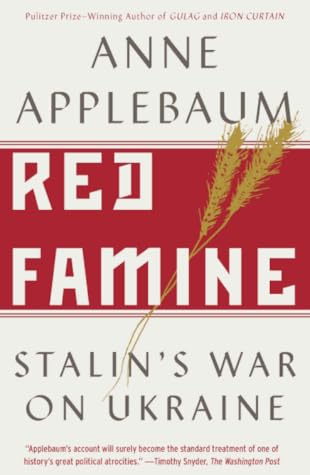More on this book
Community
Kindle Notes & Highlights
Unable to watch what was happening, Mykola Skrypnyk, one of the best-known leaders of the Ukrainian Communist Party, committed suicide in 1933.
Taken together, these two policies—the Holodomor in the winter and spring of 1933 and the repression of the Ukrainian intellectual and political class in the months that followed—brought about the Sovietization of Ukraine, the destruction of the Ukrainian national idea, and the neutering of any Ukrainian challenge to Soviet unity.
“It is a case of genocide, of destruction, not of individuals only, but of a culture and a nation.”
the history of the famine of 1932–3 was not taught. Instead, between 1933 and 1991 the USSR simply refused to acknowledge that any famine had ever taken place.
But in 1991 Stalin’s worst fear came to pass. Ukraine did declare independence.
nobody confuses the general history of “Nazi atrocities” with the very specific story of Hitler’s persecution of Jews or gypsies.
The Harvest of Sorrow, still stands as a landmark in writing about the Soviet Union.
When I am dead, bury me Як умру, то поховайте
In my beloved Ukraine, Мене на могилі My tomb upon a grave mound high Серед степу широкого Amid the spreading plain, На Вкраïні милій, So that the fields, the boundless steppes, Щоб лани широкополі, The Dnieper’s plunging shore
Дніпро, і кручі My eyes could see, my ears could hear Було видно, було чути, The mighty river roar. Як реве ревучий. Taras Shev...
This highlight has been truncated due to consecutive passage length restrictions.
All of Ukraine’s great cities—Dnipropetrovsk and Odessa, Donetsk and Kharkiv, Poltava and Cherkasy and of course Kyiv, the ancient capital—lie in the East European Plain, a flatland that stretches across most of the country.
Ukraine—the word means “borderland” in both Russian and Polish—belonged
By 1917 only one-fifth of the inhabitants of Kyiv spoke Ukrainian.
Ukraine’s declaration of independence on 26 January 1918 “marked not the dénouement of the process of nation-forming in the Ukraine, but rather its serious beginning.”
the march that took place in Kyiv on the Sunday morning of 1 April 1917 was extraordinary because it was the first of its kind.
Mykhailo Hrushevsky, bearded and bespectacled, was one of the intellectuals who had first put Ukraine at the centre of its own history. The
Ominously, Lenin also suspected that many farmers of small-holdings, because they owned property, actually thought like capitalist smallholders. This explained why “not all small peasants join the ranks of fighters for socialism.”34 This idea—that the smallest landowners, later called kulaks, were a fundamentally counter-revolutionary, capitalist force—would have great consequences some years later.


